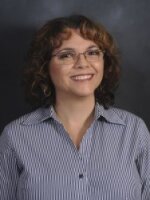In observance of Lung Cancer Awareness Month, Ascension Sacred Heart is highlighting a new surgery procedure that uses advanced robotic surgical systems to both diagnose and remove lung cancer in the same single anesthesia procedure. The one minimally invasive procedure means fewer procedures overall, faster recovery, and earlier treatment.
“Oh yeah, he can do whatever he wants,” declared Dr. Christopher Ellington, a thoracic surgeon at Ascension Sacred Heart, talking with and about the recovery of patient Scott Searcy, who had the Single Anesthesia Dual Robotic Lung Biopsy and Resection in May.
“He doesn’t have to come in here getting IVs and getting all of the side effects of chemotherapy, although it is better than it used to be, it’s still it’s a big deal to go through and to not have to go through it.”
“And the high anxiety of every trip for that,” Searcy chimed in. “This was one trip done, except for six-month checkups.”
Dr. Ellington has performed the procedure more than a dozen times in the past year. He’s the only doctor in the region that can do this, and one of very few nationwide.
The first step is the biopsy, which is needed for the diagnosis.
“It starts with an Ion robotic bronchoscopy, where we use a robotic bronchoscope and navigate it down to the nodule,” said Ellington. “We use the previous CAT scan and create a 3-D visual pathway, and the robot is used to guide down to that area.”
RELATED: Why Florida struggles to diagnose and treat lung cancer early
Dr. Ellington says he uses a needle to inject dye into the nodule, flips the patient on their side, makes five small incisions, then uses the da Vinci 5 robot to go between the ribs.
“The old school way used to do it with a big incision about a foot long. I would get my big paw in there and start feeling and see where I could feel it and then I would know where it is,” he recalled. “But with the da Vinci, you do have a little bit of tactile feel, but still, you can’t really get a great feel of it. So, the dye shows me where it is and then what I do is just grasp it with the robot and staple it off and then I send it to the pathologist while the patient is still asleep.”
And while the patient is still under anesthesia from the biopsy, the doctor says he awaits the results and prepares for a second surgical procedure, if necessary.

“If it comes back as cancer, I make the determination if I’m gonna do the full cancer operation, which means taking out one-half to one-third of the lung and/or sampling the lymph nodes in the chest cavity and making sure they’re no signs of spread,” he explained.
Two procedures under one anesthesia, with shorter recovery times averaging three to four days in the hospital, is great, but it’s not for everyone, particularly those with the more aggressive small cell lung cancer. So the doctor says he’s selective about who gets the surgery. But he encourages those at higher risk for lung cancer to get screened for early diagnosis.
If a patient is eligible, Dr. Ellington says the best part is the conversation he gets to have with the patient right after surgery.
“It’s great because you can just go in and say, look, I was right. It was cancer. But you had cancer, not you have cancer,” he said. “So, we’re way ahead of the game. We’re gonna get you taken care of. Now you can just recover from the operation; you don’t have to worry about anything else.”
Ellington said those words to Scott Searcy, who’s now 74 years old, almost seven months ago following what he described as an uneventful procedure.
“I’ve been great,” said Searcy. “I spent six days in the hospital and a couple of days of not lifting...I’ve just doing my normal life, working in the yard and living life.”
For Searcy, a retired marine biologist, one of the best aspects of the dual procedure was the reduction of stress and anxiety related to his new medical reality. After surgery, he declared that just hearing that he had cancer, but it was gone — with no need for chemotherapy or radiation — was a big relief.
“Oh, yeah, there’s no negative to this procedure that I can see at all, from my experience,” he said. “And, yeah, I have no problem at all telling my story and, like I said, the anxiety is the worst part of knowing you might have cancer and if they’d done a biopsy then I’d have known it was cancer and then I’d have to wait another three to four weeks for the surgery, and I’m pretty easy going, but you know.”
Now, post-surgery, it’s just a matter of blood work and CAT or CT scans every six months.
“It couldn’t have been better. Yeah, it was just easy-peasy,” Searcy said.
“Yeah, everything was good,” added Dr. Ellington. “We got you in and got you taken care of and thankfully we got it caught at the perfect time.”
“Yep, it was perfect timing,” said Searcy. “Thank you, sir.”
“Good to see you again.”
“You, too. God bless you,” said Searcy.


